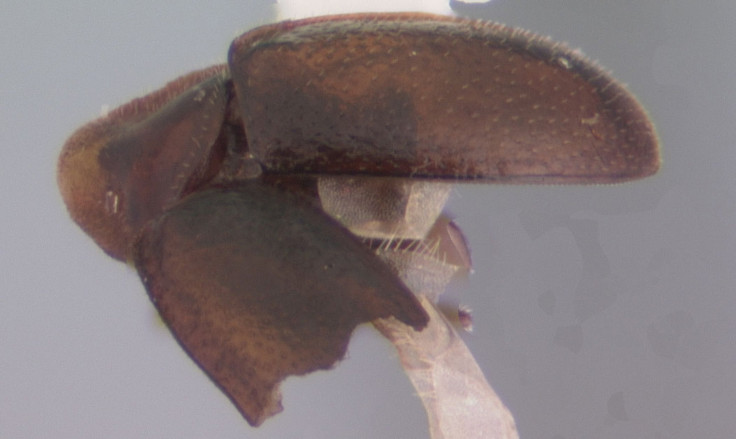Rarest Ladybug In US Discovered in Montana; It's Also 'Headless'

A rare "headless" ladybug was recently discovered in Montana. The ladybug is a new species as well as a new genus of ladybug, according to reports.
The ladybug does have a head but it hides it by tucking it into its neck, according to Reuters. Ross Winston, a former entomology graduate student at Montana State University, had caught the rare ladybug in a trap he set up around sand dunes in Montana.
Winston, now a wildlife technician in Idaho, had sent the ladybug to a team of Australian researchers, reports Reuters. The Australian scientists published their findings in the current issue of Systemic Entomology. According to Reuters, the ladybug may eat aphids and other small insects that feed on plants. It’s roughly the size of a grain of sand.
According to researchers, this is the rarest ladybug in the United States. In fact only two have been caught, a male in Montana and a female in Idaho. Aside from tucking its head into its neck, reminiscent of a turtle, the rare ladybug has a few other traits that distinguish it from other ladybugs. Most importantly, it’s a tan color and does not have any spots, unlike the red-spotted ladybugs we are familiar with.
Winston had believed he caught an ant or another insect, according to a Montana State University statement. He went to his former professor Michael Ivie, a MSU entomologist, who recognized the rare ladybug as a Ladybird Beetle. Ivie recognized what the rare ladybug was after recalling a female of the species that was caught in Idaho. Ivie then sent the insect to Hermes Escalona and Adam Slipinski in Australia, who were studying ladybugs.
The ladybird beetle family of ladybugs contains some of the strangest ladybugs and certainly ones you won’t find in your garden. In a statement Winston said, "This species and some of its sister species are some of the rarest mostly due to their size, collection frequency, techniques required to collect them and the fact that we know almost nothing about their biology (life cycle, where it lives, what it eats, etc)."
Even though a female ladybird beetle was caught previously, the male was what scientists needed to classify a new species, notes Winston. The ladybird beetle is the rarest in the United States and its discovery led to not just a new species, but a new genus, or family, as well. “While discovery of a new species of beetle in the USA is not an everyday event, a completely new genus is quite rare," remarks Ivie.
Escalona and Slipinski have named the new species Alleninus iviei, after Ivie. Ivie still wants to give his former student credit though and hopes that the common name for the rare ladybug will be “Winston’s Ladybird Beetle.”
© Copyright IBTimes 2024. All rights reserved.












